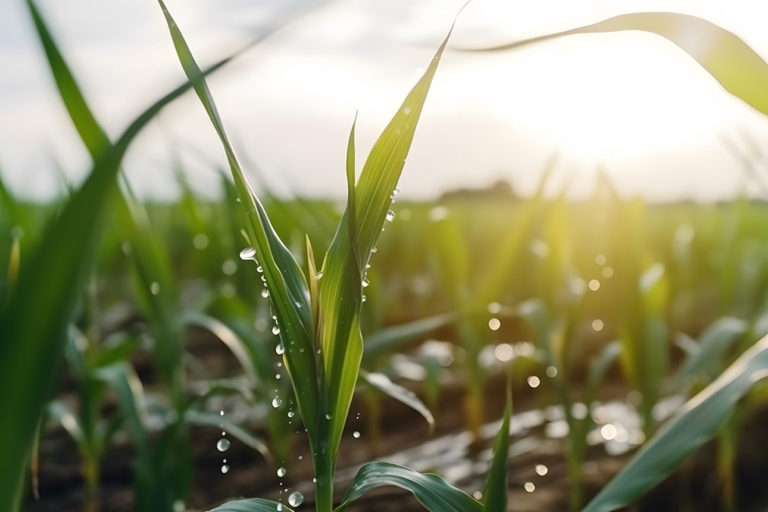It’s now a confirmed fact: the “normal” year seems to be a thing of the past. Farmers must now make allowance for increasingly frequent and intense climate hazards when managing their crops. How can they do this? By activating all possible levers to improve plant resistance to these phenomena.
Greater robustness allows the corn to grow properly in order to produce the expected yield and quality. Obviously, technical considerations are among the most important levers: speed and homogeneity of emergence will depend the choice of variety and the date and quality of sowing. Sowing in dried and heated soil ensures the cycle gets off to a good start, thereby improving resistance to early pest attacks and ensuring proper development of the root system to make the best use of the available water resource.
Improved water management and yield gain
The application of biosolutions as a preventive measure is also a key step. These solutions help the plant to rapidly mobilize all resources in order to be more resistant in the event of future stress. One example is Best-a / EliZea, an Elicit Plant product, composed of phytosterols. These molecules have proven to be powerful triggers of plant defense reactions, making plants adapt even before the disturbance occurs.
Applied at the 6-10 leaf stage, Best-a/EliZea triggers a physiological response that produces several effects: reduced water requirements (-20%), better management of the available resource, partial closure of the stomata to limit evapotranspiration, increased root development to access a greater water reserve and, ultimately, an increase in yield.
Between 2019 and 2023, trials demonstrated a gain of nearly 5.7 q/ha over nearly 300 repetitions
Even in ideal climatic conditions, the application of phytosterols remains beneficial or, at worst, neutral. Their use is therefore strongly recommended every year. This is a worthwhile and profitable investment for protecting corn plot yields in the event of abiotic stress during the vegetative phase.




